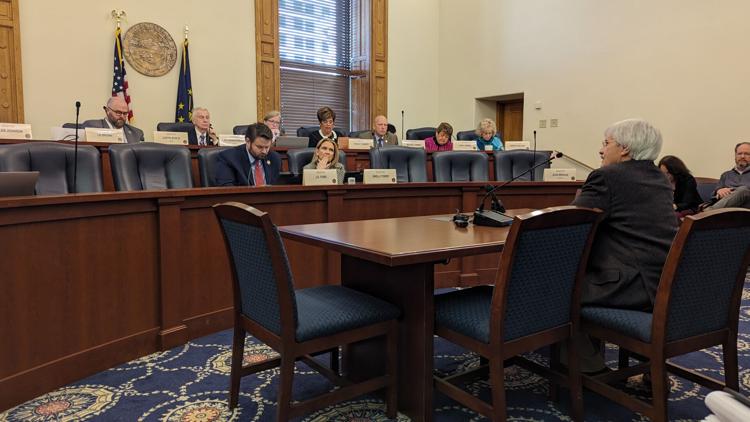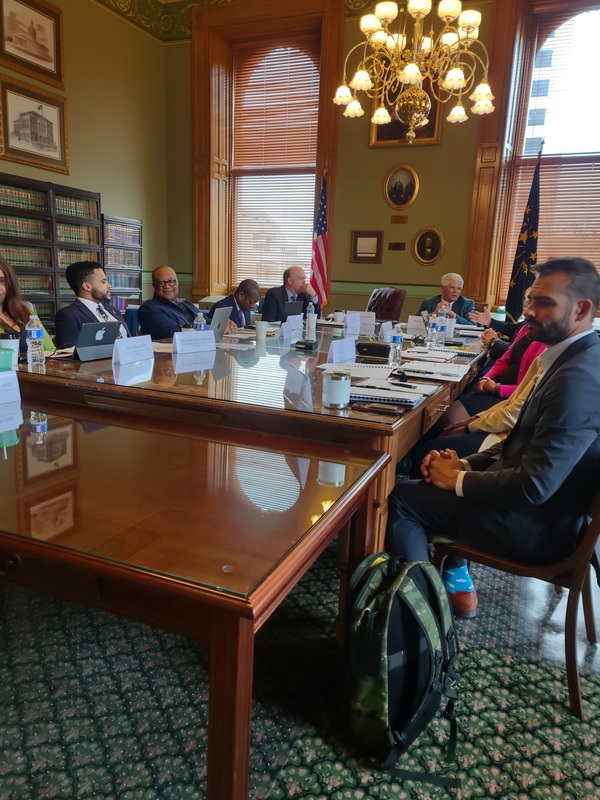In 2019, Indiana had over 300,000 children with the potential need for child care, with only an estimated 166,000 slots available, according to Early Learning Indiana.
Senate Bill 2 aims to help with the issue. The Senate Health and Provider Services Committee met Wednesday morning to discuss it and other bills.
SB 2 would reduce the minimum age to work in infant and toddler rooms to 18 and the age for taking care of school-age children to 16. Expanding the age range gives more access to high schoolers looking for jobs and gives teenagers pursuing a career in child care the chance to get involved, said supporters.
“This presents a great opportunity to give our future school-aged child-care professionals more hands-on experience in the field while they are still in high school,” said Sam Barnett, associate director of advocacy at the Indiana After School Network, while testifying in front of the committee.
The bill would also automatically qualify the children of child-care workers for the state programs On My Way Pre-K and Child Care Development Fund, which help parents with the financial burdens of child care. Bill author Sen. Ed Charbonneau, R-Valparaiso, hopes these things will help incentivize parents to work in child care.
To help address the problem of child-care deserts, especially in rural areas, the bill would launch a pilot program creating at least three micro facilities. These facilities would have three to 30 children and would operate under the supervision of the Family and Social Services Administration (FSSA).
To help reduce the costs of child-care facilities, the bill would get rid of an old regulation that certain child-care employees must take a CPR course every year even though the American Red Cross CPR certification is good for two years.
“CPR is generally needed every two years, but we’ve been required to provide it every year for employees,” said Chrystal Struben, president and CEO of AYS At Your School, which operates before- and after-school programs. “This is a significant cost for providers. So, being able to move that to every two years allows us to create some efficiency and provide other training opportunities for staff aside from CPR.”
Those in support of the bill noted the importance of child care in attracting and keeping workers in Indiana.
“Every person in this state, whether they’ve been here for a while, starting a family, or moving to Indiana, child care is going to be necessary for a lot of them to be able to work in these facilities,” said Andrew Berger of the Indiana Manufacturing Association.
Finally, SB 2 would require the FSSA to publish monthly updates on its website with data about child care, such as the number of child-care subsidies available, the average copay required under each subsidy, and the number of children on a waitlist for each subsidy, according to a press release.
The bill does not address the pay of child-care workers themselves. Last year, some Indianapolis child-care workers joined in protest of their low wages, which they thought was the real problem behind a lack of child-care slots.
“There are hundreds of thousands of children every day that do not have access to child care because we cannot hire people for poverty wages in this field,” child-care worker Kelly Dawn Jones said in an interview with WFYI. “And it is a sad situation because we have the power to fix it, we have the power to change it. The funding exists to change it.”
Charbonneau decided to hold the bill until next week, when the committee will vote on whether to pass it.










